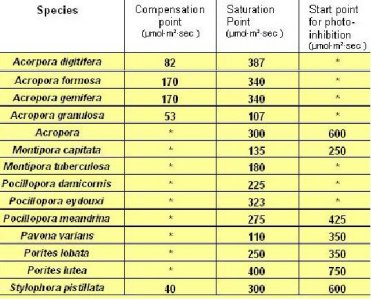Rockys_Pride
New member
I'm wondering if there is a set amount of PAR that certain species grow best at. I found a table on here once, but I can't seem to find it again. Reading through the threads I'm finding that most people vaguely say, they all need different lighting requirements. I'm trying to find those requirements.
EDIT: found it. Is this still accurate? Table was not made by me, instead a far better RC user than me.
EDIT: found it. Is this still accurate? Table was not made by me, instead a far better RC user than me.

